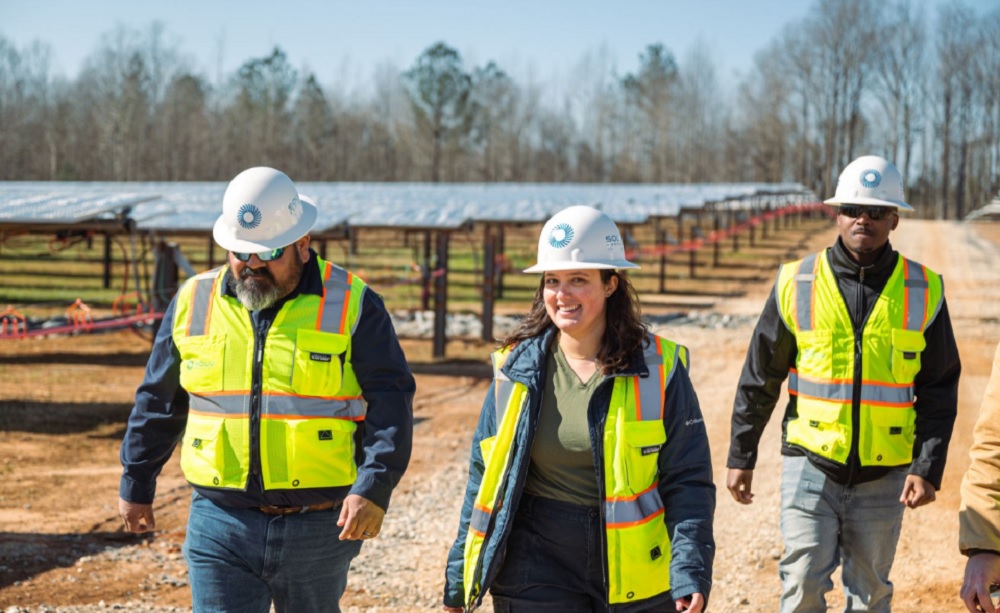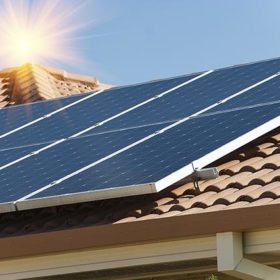Recent legislation has launched a clean energy revolution in the United States, beginning in 2021 with the passage of the $1.2 trillion Bipartisan Infrastructure Law, and followed one year ago by the Inflation Reduction Act (IRA). Last year also saw the passage of the $67 billion CHIPS and Science Act to support production of semiconductors. Together these laws will strengthen America’s technology leadership, develop clean energy and more, not the least of which is the creation of quality jobs.
The Department of Energy’s recently released jobs report, 2023 U.S. Energy and Employment Report (USEER), shows that the energy workforce grew nearly 4% with nearly 300,000 jobs added from 2021 to 2022, outpacing the growth rate of the overall U.S. workforce. According to the report, clean energy jobs increased from 7.8 million in 2021 to more than 8.1 million in 2022. The strongest growth was seen in battery electric vehicles, which grew nearly 30%, or 17 times faster than the job growth seen in the gasoline and diesel vehicle sector.
Solar fallw into the category of clean energy technologies in the report, which overall accounted for over 20,000 new jobs or more than 84% of net new electric power generation jobs, adding 21,664 overall. Both solar and wind had strong employment growth, with solar adding 12,256 workers, up nearly 4%. Wind had a strong growth rate, but added fewer workers overall.
Demographics and diversity
Women and minorities have been underrepresented in the U.S. energy sector, however, that is slowly changing. In October 2021, Solar Energy Industries Association (SEIA) launched a program to encourage the hiring of a diverse workforce. SEIA’s annual report on the program notes its positive impact in its first year. The DOE report also indicates that a change is afoot, with women now making up more than half the new workers in energy jobs in 2022. However, women have along way to go, as they made up only 26% of the energy workforce, compared to 47% of the U.S. workforce overall. The report notes that the representation of women was highest in electric power generation sectors, where they made up 32% of the workforce.
In terms of race, the energy workforce also has some work to do. The percentage of non-white workers in energy is slightly higher (24%) than the general workforce, however, the energy workforce has a lower number of Black workers. The proportion of Hispanic or Latino workers in energy (18%) was just below the national average of 19%, and Asian workers make up the same percentage in energy (7%) as the national workforce. American Indian or Alaska Native workers made up 2% of the energy workforce, which was more than twice as high as the average in the U.S. workforce.
The report found that the energy workforce is generally younger than the U.S. workforce as a whole, with 83% under 55.
State growth
With the clean energy boom taking place across all fifty states, it’s not surprising that clean energy jobs grew across the country. The strongest growth in clean energy jobs in general was seen in the strong solar states of Texas and California, as well as Pennsylvania. The strongest growth in electric power generation was seen in Delaware, which was up 14%, followed by Idaho (12%), Washington DC (11%), and Montana (9.6%).
Overall the data is encouraging, as energy employment continues to outpace economy-wide employment and clean energy jobs outpacing energy jobs in general. The growth in clean energy jobs is expected to continue on a upward trajectory as projects that resulted from the Investing in America agenda come to fruition. As U.S. Secretary of Energy, Jennifer Granholm noted, “We’re transforming local economies and delivering healthier and more prosperous communities along the way.” With the goal of carbon-free electrical grid by 2035 and a net zero economy by 2050, energy workers will play a pivotal role in every county and state in the country.
This content is protected by copyright and may not be reused. If you want to cooperate with us and would like to reuse some of our content, please contact: editors@pv-magazine.com.









By submitting this form you agree to pv magazine using your data for the purposes of publishing your comment.
Your personal data will only be disclosed or otherwise transmitted to third parties for the purposes of spam filtering or if this is necessary for technical maintenance of the website. Any other transfer to third parties will not take place unless this is justified on the basis of applicable data protection regulations or if pv magazine is legally obliged to do so.
You may revoke this consent at any time with effect for the future, in which case your personal data will be deleted immediately. Otherwise, your data will be deleted if pv magazine has processed your request or the purpose of data storage is fulfilled.
Further information on data privacy can be found in our Data Protection Policy.